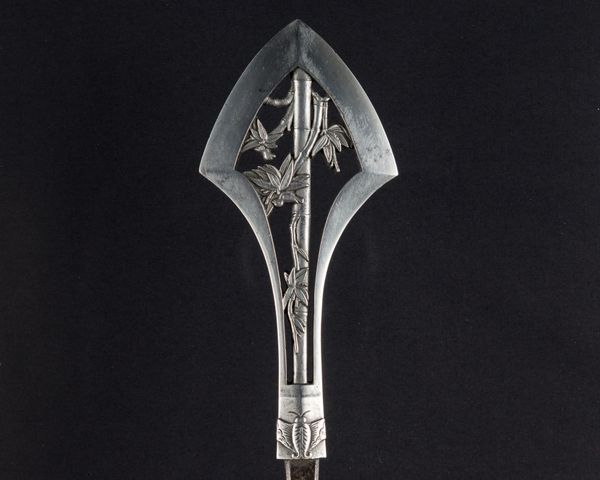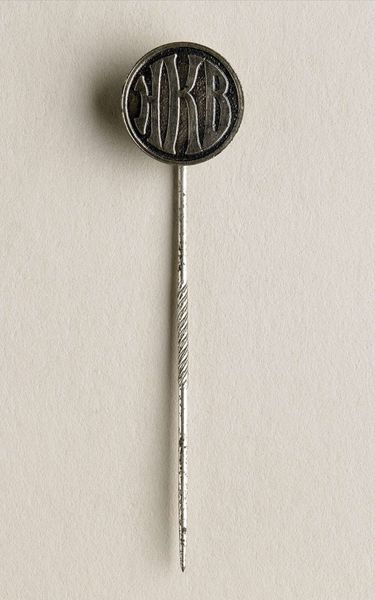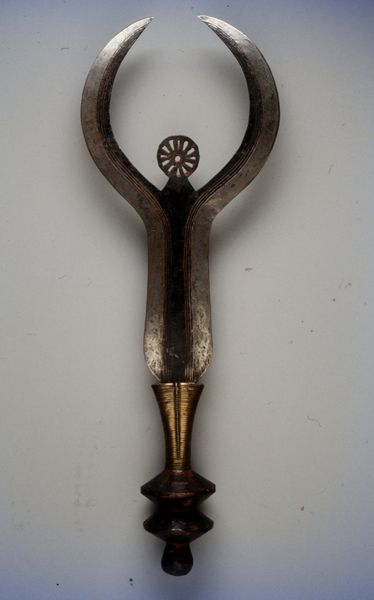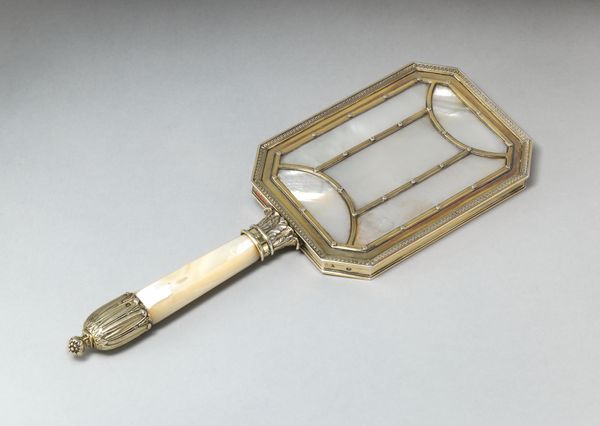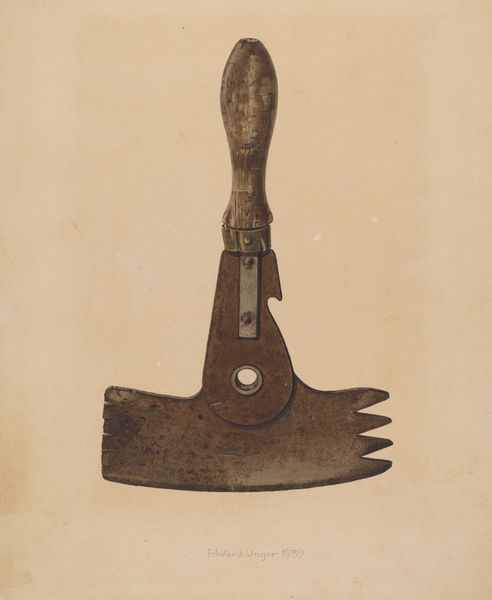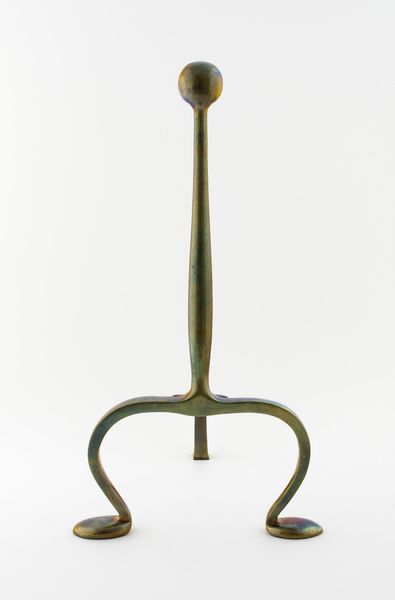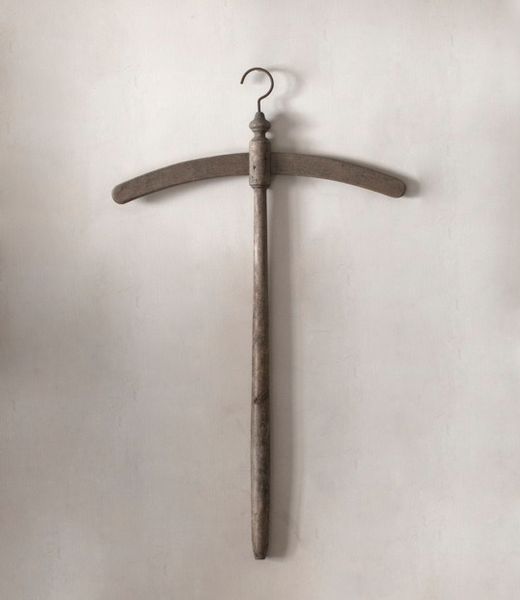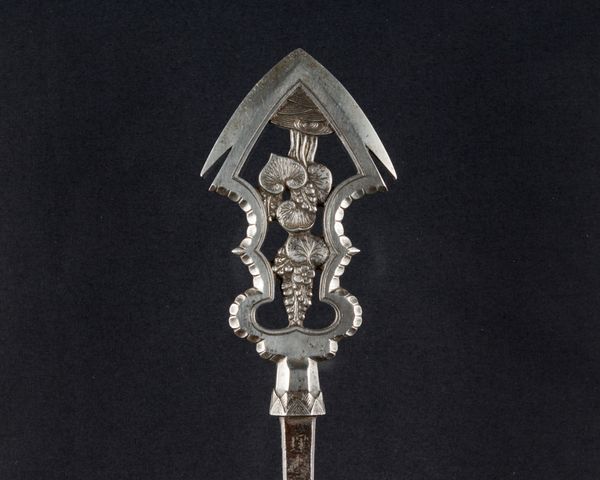
carving, metal, ceramic, sculpture
#
carving
#
metal
#
stone
#
sculpture
#
ceramic
#
japan
#
form
#
sculpture
#
decorative-art
#
statue
Dimensions: L. 10 5/8 in. (27 cm); L. of head 4 1/16 in. (10.3 cm); W. 1 7/8 in. (4.8 cm); Wt. 3.8 oz. (107.7 g)
Copyright: Public Domain
Editor: So this is "Ceremonial Arrowhead (Yanone)" from 1645 by Umetada Motoshige. It's a striking metal carving, so delicate and ornate. It makes me wonder, how was it actually used? What can you tell me about its significance? Curator: Well, “ceremonial” is key. Think about what symbols of power look like in different societies. This arrowhead isn’t simply a weapon; it's a statement. Metalwork of this kind in 17th century Japan was closely tied to Samurai culture. So we should ask, what social hierarchies, what power dynamics, are being reinforced here? Is it purely about strength? Or could it be communicating more subtle messages of artistry, refinement, and cultural authority? Editor: I see what you mean. The intricate detail does suggest more than just warfare. It’s almost like a form of propaganda, maybe projecting power and sophistication? Curator: Exactly! It's also important to remember that functional objects often carry symbolic weight. Think about the history of metalwork—often controlled by specific guilds, connected to displays of wealth, linked to ritual practices. In what other ways could an object like this have played a role in solidifying existing social structures or even subtly challenging them? Editor: So it's less about the object itself, and more about how it functions within society, its networks of power and meaning. Curator: Precisely! We need to look at art as a social product, constantly interacting with political and cultural forces. Even something as seemingly simple as an arrowhead tells a story of its time. Editor: That's a totally different perspective than I was expecting. Thanks! It really does put the artwork in a richer context.
Comments
No comments
Be the first to comment and join the conversation on the ultimate creative platform.
